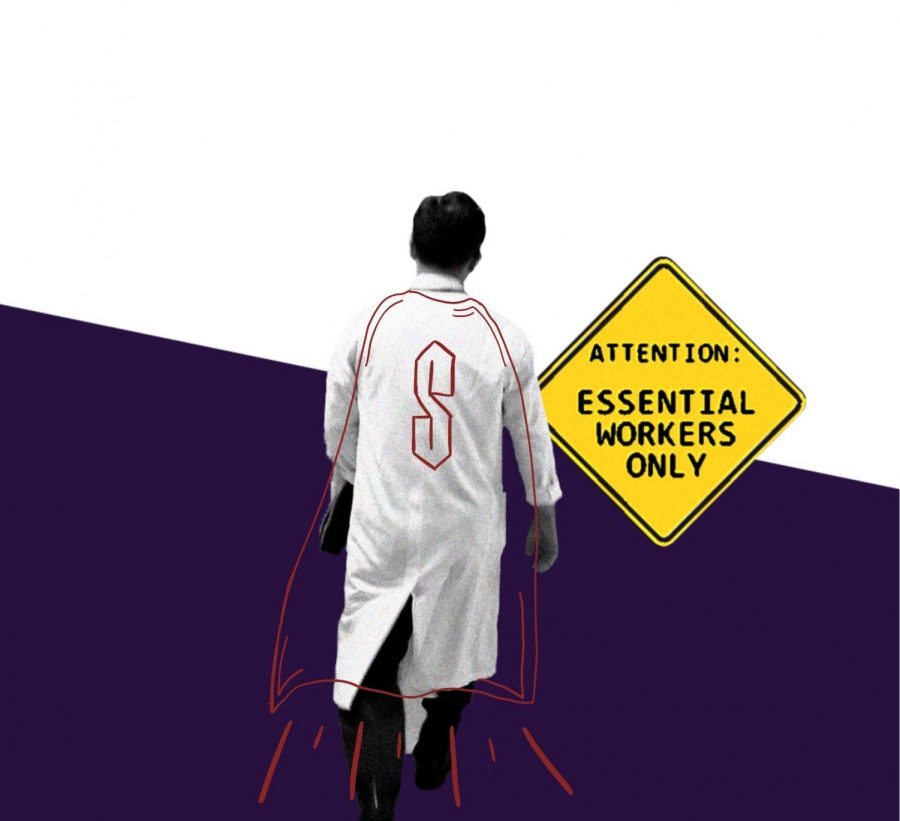Over the break, I was in a reading frenzy. With so many books to read and only a month of free time, friends would often see me up at my favorite café, sitting at the end of the counter with a mug of coffee to my lips, a cigarette in hand and my nose in a book.
Finding a book is sometimes a daunting task, but is most often accomplished by a little research and a lot of luck. After skimming the New York Times before one of my exams last semester, I saw a review of a book called The World Without Us by Alan Weisman. With a title like that, I was immediately intrigued.
Weisman, who writes for the Times, went around the world talking to environmental scientists and conservationists about the state of our planet. He asked the question, “What would happen if humans just disappeared from the earth?” No genocide, plagues, or nuclear warfare. Just-poof!-and we are gone. How long would it take Mother Nature to reclaim the towering skyscrapers of New York, the grand boulevards of Paris and the oftentimes endless blocks of suburbs?
Occasionally, when walking down South Grand Boulevard or driving on Washington Avenue through downtown St. Louis, I would wonder what the magnificent cities of New York and Tokyo would look like after five, 10, 50 or even 100 years without humans to pick up the leaves every year, repave the streets and tuck-point the bricks. The answers were surprising. Without human intervention, a house, from the pipes to the two-by-fours, would take around 100 years to revert back to an empty lot.
As for the cities, it would take longer. Asphalt would crack and become overrun with weeds. Dead leaves would clog our sewer systems and the freeze-thaw cycles of our seasons would burst our pipes. Cars would rust in the streets, while fires would break out from natural gas and oil leaks. Flooding would reclaim valleys and lowlands while hurricanes and tornadoes would level costal lands and plains.
Depressing, eh? That’s not even the worst of it. In his research, Weisman looked at the real impact that humans have had on the world. Today, where Pacific Ocean currents converge, trash from all around the world accumulates into big islands of trash.
The main culprit of ocean pollution in the 21st century? Plastic. The development of plastic revolutionized society and became integrated in everything. Its usefulness is in its chemical stability. Plastic takes hundreds of thousands (if not millions) of years to break down completely. Weisman chuckles at the fact that the most common piece of garbage found on these islands are plastic flip-flops.
But Weisman also looks at modern places of reclamation. Take the de-militarized zone on the Korean peninsula. A stretch of land 155 miles long and 2.5 miles wide has been untouched for more than 50 years. Korean conservationists discovered that this area of military dispute has become a haven for some of the most endangered species on the peninsula. Also in Cyprus, where Turkish and Greek factions have been arguing over borders since the ’60s, whole towns have been abandoned and are on their way to final natural reclamation. One of the more eerie examples is the area around Chernobyl, where the infamous Soviet nuclear plant endured a meltdown in 1986, contaminating miles of land around it. Today, animals have returned, but the effects of radiation in the form of unusual fur patterns in mammals and deformed beaks in birds can be observed.
So what is the point in reading, or even writing, a depressing and fascinating book like this? I guess you can see it as an informal progress report on our planet. Weisman asks whether or not the planet could ever revert to the same state that it was in before human cam around. The scientists interviewed came up with many different answers, but the impression is that it will take millions and millions of years to undo the damage that we have done in our meager 200,000 years on this planet. We must remember that the earth is 5 billion years old, with life emerging around 3.7 billion years ago. It seems that in a blink of cosmic time, the face of our planet has been rapidly transformed.
While the green revolution is still in its infancy, nourished perhaps by noticeable changes in our climate, we must always remember that we are stewards of this planet and that the desire to leave it in a cleaner, more peaceful state than we received it should be our mantra as we refuse both paper and plastic when in the line at Schnucks, opting instead for reusable canvas grocery bags.
George Caputa is a junior in the College of Arts and Sciences.






